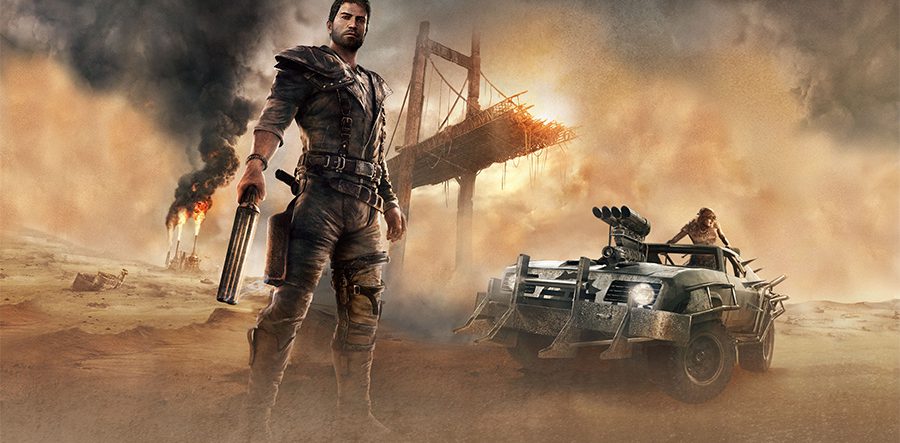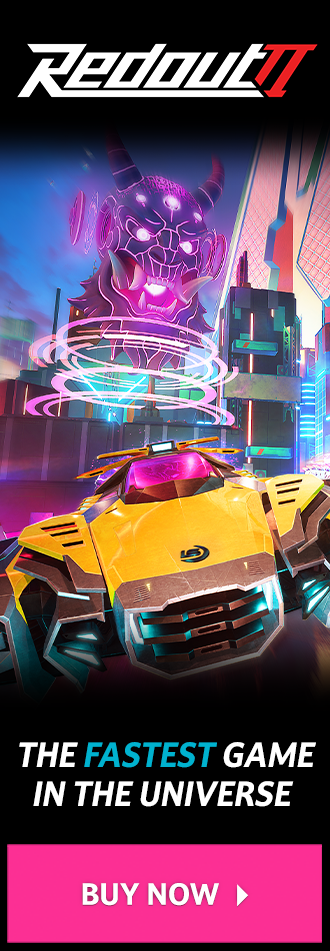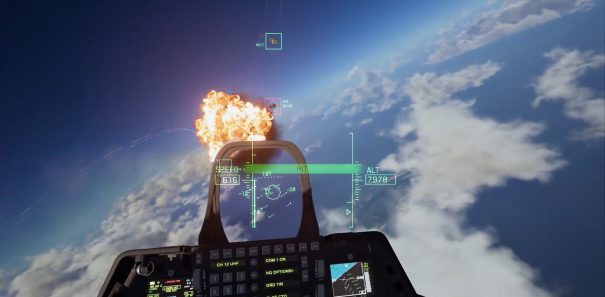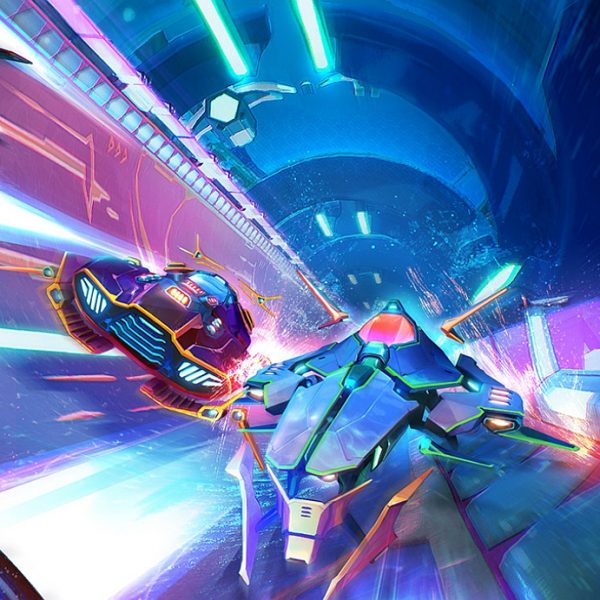Open world games set in post-apocalyptic wastelands have become overly saturated to say the least, but the likes of Borderlands, Rage and particularly Fallout all owe a lot to what is arguably the genesis of the genre: Mad Max. Indeed, Fallout is so full of references that it’s practically a love letter to the Mad Max films, which is a testament to its lasting influence.
It’s surprising, then, to find that such a respected film property as Mad Max has been sorely underrepresented in video games, with only a negligible NES game released in 1990 as a tie-in for The Road Warrior film to his name. It’s little wonder that his absence spawned a number of not-so-subtle Mad Max-inspired games; the most blatant perhaps being the Commodore 64’s The Last V8, a knowing nod to Max’s Interceptor hailed in the first film as the “The Last of the V8s,” to fill the void.
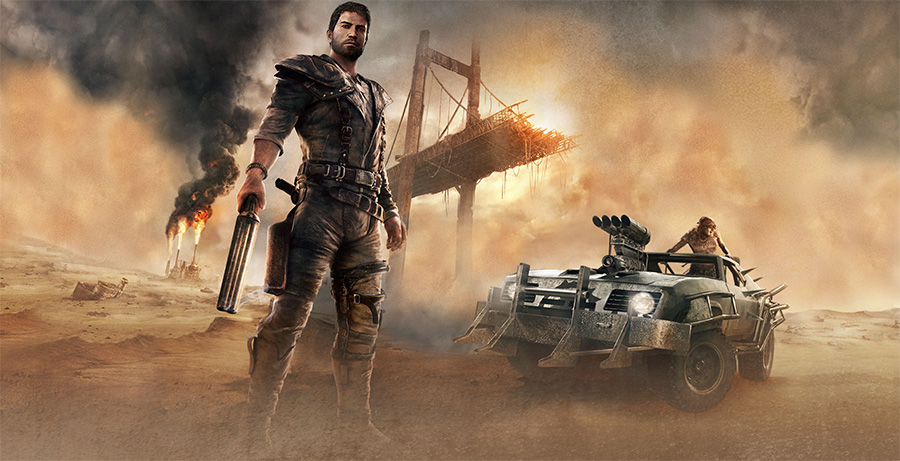
This year saw the triumphant return of The Road Warrior to cinema screens for the first time in 30 years with the release of the critically-acclaimed Mad Max Fury Road from original director George Miller, so it’s fitting that the inevitable Mad Max game has been equally long in coming. Developer Avalanche Studios are no stranger to sandbox games, either, having worked on the gloriously OTT Just Cause series, so applying their mastery to a franchise renowned for apocalyptic world building and high octane action set-pieces was an exciting prospect indeed.
With Mad Max reaching fever pitch this year thanks to Fury Road, the timing of the game couldn’t be better. Actually, scrap that. The timing couldn’t have been worse, as the initial release veered straight into the path of Metal Gear Solid V; one of this year’s most anticipated releases which also happens to be set in a literal open world sandbox. Of course, Mad Max has plenty of loyal long-time fans, but then so does Metal Gear Solid – the difference is that Mad Max doesn’t have a stellar game reputation to fall back on.
Can Mad Max set itself apart in an overcrowded genre or should it be left on the scrapheap?
The Road Warrior
Arriving a few months after the release of Fury Road, you’d be forgiven for assuming the Mad Max game is a direct adaptation of Miller’s modern masterpiece. Thankfully this isn’t the case, and the game is better for it, rising above typical game tie-ins hastily released to boost publisher profit margins.
Mad Max tells an original story that isn’t officially canon to the film series, despite featuring plenty of connections to the cinematic universe. Taking place before the events of Fury Road, the game starts in a similar fashion to film: we first see wasteland wanderer Max Rockatansky behind the wheel of his iconic Interceptor seeking solace on the way to the Plains of Silence. Before long he’s ambushed by a tribe of bloodthirsty War Boys under the leadership of vicious warlord Scabrous Scrotus, who happens to be the son of Fury Road’s Immortan Joe, stripped of his cherished car and left for dead. Scrotus doesn’t survive unscathed however, miraculously surviving a chainsaw tearing into his face during a bloody battle with Max.
After wandering the wasteland, Max soon encounters Chumbucket, a hunchbacked mechanic who’s hell-bent on building the ultimate car known as the Magnum Opus because he believes it’s his religious calling and that Max has been sent to help him fulfill his prophecy. Together, Max and Chumbucket begin their quest to salvage parts for the Magnum Opus, exact revenge on Scrotus and retrieve his stolen ride.
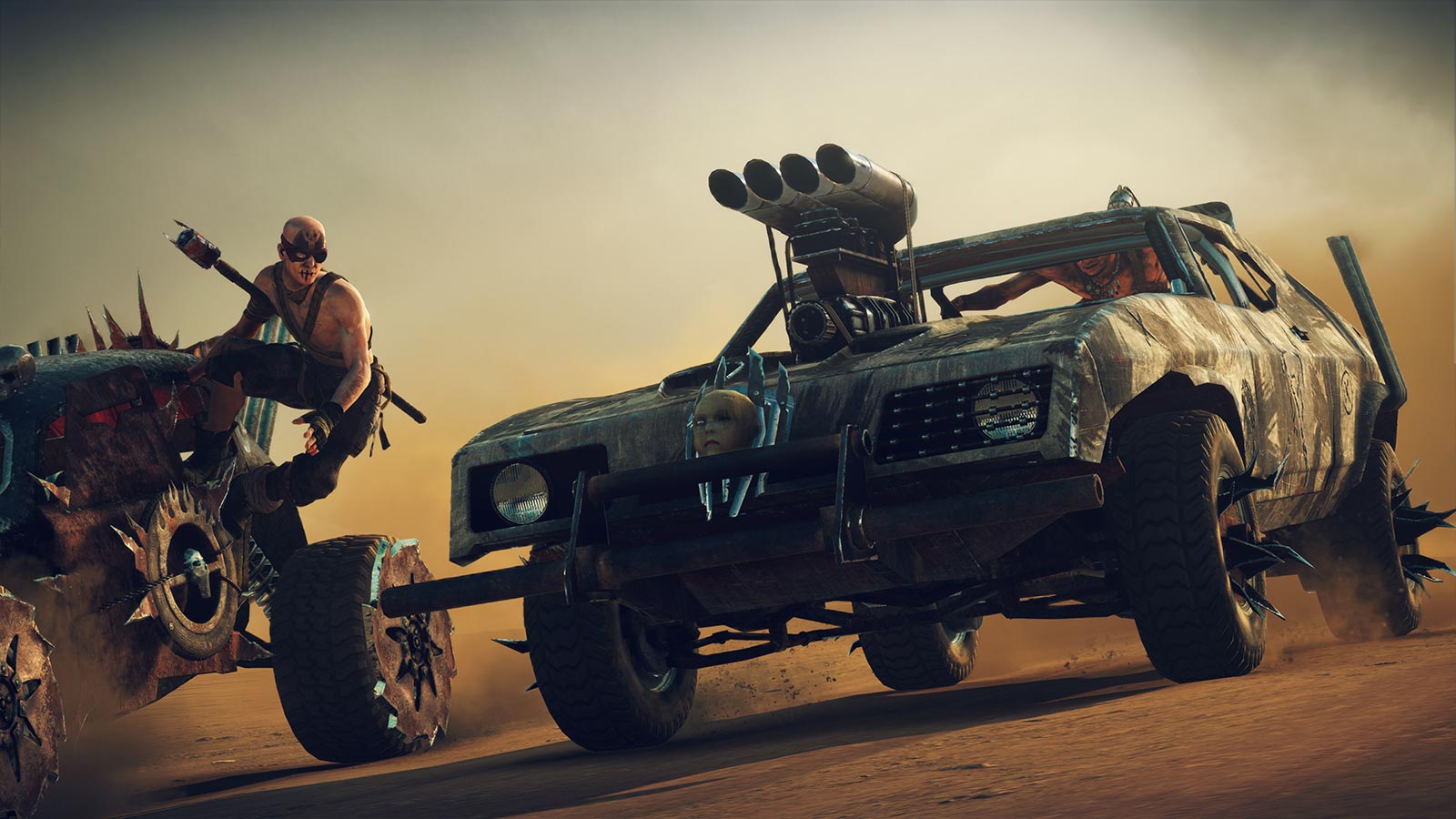
Chumbucket rides along with you in the back at all times, spouting one-liners that help contextualise the wasteland. He also makes himself useful by repairing your damaged car on demand, but his constant inane jabbering soon grates when his one-liners start to repeat. Cars have become something of a religion to inhabitants of the wasteland, but Chumbucket’s obsessive love for cars borders on fetishistic at times.
Controlling the Magnum Opus initially feels a tad clunky, and it was surprising to find the default control setup doesn’t have a handbrake which seemed like an odd oversight – pulling last minute handbrake turns to outwit your pursuers is an essential part of evasive driving, after all. Thankfully, it turns out a handbrake can be activated by selecting the alternative control setup, which isn’t well explained. By default, the Magnum Opus also auto-corrects when airborne by default like in Driver San Francisco to prevent the chances of rolling over which explains why the physics felt so stiff at first, but this can now be changed in the settings after a recent update that loosens the physics to let you roll the car.
The car handling soon improves once you explore Mad Max’s extensive car customisation options, allowing you to fit your car with a plethora of post-apocalyptic upgrades. There are plenty of arbitrary mechanical upgrades you can apply to improve the engine, suspension and tyres, but it’s the defensive options that prove more interesting, from bumper-mounted grills to side-mounted flame throwers. It’s very satisfying to see your car evolve from a barebones chassis to an all-out war machine throughout the course of the game, making the Magnum Opus just as much a central character as Max – just how it should be in a Mad Max game, given the series’ longstanding focus on cars.
You have to be strategic when applying upgrades, however: mounting ramming grills and heavy-duty armour may inflict more damage, but the extra weight has an adverse effect on speed, while equipping a beefier engine (the raspy roars of the V8 engines are suitably savage) will negatively affect the car’s handling if you don’t have the right suspension or tyres to handle the extra horsepower.
Mad Max is at its best when it tries to re-enact the awe-inspiring spectacle of Fury Road’s non-stop vehicular warfare. Indeed, you can always rely on the Mad Max series to deliver some thrilling car chases with daring stuntwork, and Fury Road was no exception – the whole film is practically one drawn-out, high-octane chase that begs to be seen on the big screen. It’s the perfect source material for an action game.
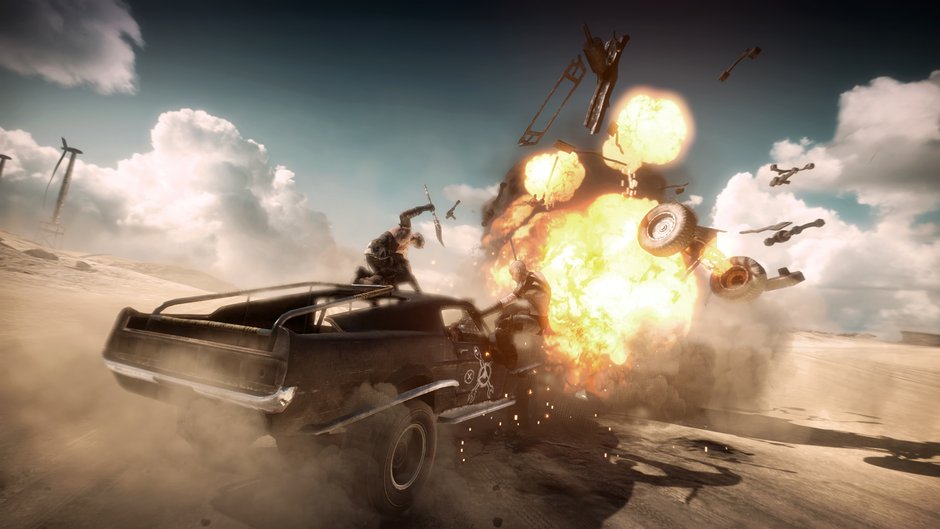
Car combat in Mad Max is weighty and deliciously destructive – you certainly feel the wincing impacts when metal meets metal. Slamming into enemy vehicles is made easy in the game’s numerous chase scenarios thanks to a dedicated ramming button that lunges your car into nearby vehicles, resulting in some spectacular smash-ups that shower the screen with debris.
Inflict enough damage, and enemy cars erupt into fireballs in some of the best explosions seen yet in a game (at least, I suspect, until the impending release of Just Cause 3) that would make Michael Bay foam at the mouth with glee. When it comes to blowing things up, Avalanche is still the best in the business. An in-car view offers a more visceral view of the action, but the restricted view makes it difficult to monitor enemy vehicle positions and anticipate their attacks.
The Magnum Opus comes equipped with a handy harpoon manned by Chumbucket which acts as your trusty tool of destruction, letting you wreak havoc in creative ways much like the grappling hook in Avalanche’s sister series Just Cause 2. Selecting it slows the action down to increase the accuracy of your aiming, allowing you to rip off armour, dislodge wheels and comically yank drivers out of moving cars, tortuously towing them across the sand before comically catapulting them through the air. Eventually you’ll unlock the ridiculously-named Thunderpoon which fires explosive rounds which cranks up the carnage considerably, but its use is restricted unlike the harpoon.
Random factions will often give chase, but you can also reverse roles and hunt down vehicle convoys. Convoy routes are scattered throughout the map comprising a target transport truck carrying fuel protected by a fleet of armoured cars, but the routes follow a linear path indicated by tyre tracks so you end up essentially driving in circles. Convoys showcase Mad Max’s car combat at its best and most cinematic, combining challenge with tactics and vehicle variety.
It’s wise not to attempt ambushing a convoy until your Magnum Opus is suitably equipped, however – it takes a long time to destroy the heavily armoured trucks, and their damage level regenerates if you lose sight of them for too long which can be frustrating, as I often found myself having to stop for repairs before giving chase again. Annoyingly you have to exit your car while you wait for to Chumbucket extinguish the fire should you sustain serious damage, leaving you vulnerable to attacks as vehicles charge at you. Since you rarely have any weapons to defend yourself, you’re often forced to awkwardly run in circles and roll out of the way of oncoming cars until your car is fixed.
You’ll also get to drive a range of vehicles lifted from the film: Fury Road fans will recognise the distinctive spiked hot-rods driven by the Buzzards for example, but only the Magnum Opus can be upgraded. These vehicles can be entered in Death Run races which have you smashing through checkpoints, or alternatively you can steal them and store them in your stronghold, which has the added benefit of letting you drive through enemy territory undetected.
Mad Max doesn’t quite capture the scale of Fury Road’s cavalcade of carnage, but when you’re fending off multitudes of vehicles surrounding you or trying to remove suicidal War Boys clinging to your car you do feel like you’re in the midst of one of the film’s action set-pieces. The only missing element is that you can’t leap out of your car onto moving vehicles Pursuit Force-style like Max often does in the film.
Mad Max more than makes up for this generation’s bewildering lack of car combat games – it’s just a shame there’s no online multiplayer to truly take advantage of it. It’s also surprising to find that there’s no music to accompany the action. A pumping orchestral soundtrack like in Fury Road would have done wonders to heighten the excitement of the car chases, although it may have distracted from the excellent engine sounds, anarchic dialogue and metal-grinding sound effects. As it stands, the shortlived soundtrack that plays over some crucial scenes isn’t very memorable.
Unfortunately, the game sometimes struggles to cope with the ensuing chaos, often grinding to a halt with frequent frame rate drops on the PS4. Recent patches have improved the overall performance, but the game still suffers from slowdown at hectic moments. Unsurprisingly, the PC version delivers the most optimised experience with the option to run at 60fps and higher resolutions.
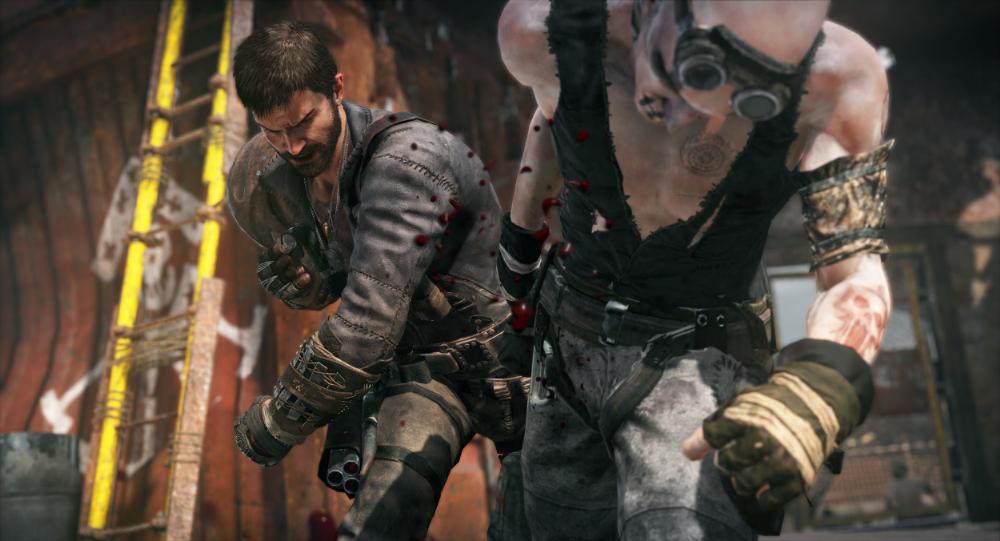
Ammo is scarce to the point you’ll rarely have more than a couple of bullets loaded in your shotgun at a time, so Max mainly relies on fisticuffs to fend for himself on-foot when scrapping with enemies. Unfortunately, Mad Max’s melee combat pales in comparison to the consistently exhilarating car combat, yet you spend just as much time on-foot as you do behind the wheel of a car. Whenever the game forced me to traverse on-foot I instantly wished I could hop back into the Magnum Opus and witness some more delightful destruction.
Anyone who has played the Arkham series will find the hand-to-hand combat instantly familiar: mashing the punch button lets you pummel enemies to a pulp, another acts as a timed button prompt to counter attacks, while another lets you dodge attacks by rolling. Max fights with far less finesse than the caped crusader, but this is befitting for his character: Max is a wasteland brawler, not a superhero, and this is reflected through his cumbersome fighting style.
Successful combos unlock a Hulk-style Fury mode, causing a deranged Max to dish out more damage for a limited time. The melee combat is beautifully brutal at times – I particularly like the bone-crunching sound effects when you bash someone’s skull in. A special mention also goes to the Thunderstick, an explosive javelin-like weapon that can be used to violently impale enemies at close range.
While the combat may be deliberately clumsy, it doesn’t excuse the unreliable camera – there were a number of times when enemies crept on me because the camera’s awkward positioning in compact areas prevented me from seeing them at crucial times. Mad Max’s hand-to-hand combat is serviceable but simplistic and linear compared to the vehicle combat which gives you far more freedom of choice to carry out your attacks, and while you do encounter a variety of enemies with different appearances, weapons and abilities, not to mention boss battles, the fighting gets very tedious, particularly as the game has a habit of overwhelming you with huge hordes of enemies rather than presenting you with enemies that pose any real challenge, resulting in repetitive brawls that drag on for an eternity. It really is as laborious as it sounds, sadly.
Like the Magnum Opus, you can also customise Max’s appearance to the point you can make him grow a full-on beard that makes him resemble a hobo if you desire (lets face it, his immaculately-trimmed stubble would never last in the wasteland) and upgrade his fighting abilities, but the upgrade system lacks the depth of the car customisation as Max’s unlockable moves are mostly restricted to contextual attacks that rarely make you feel like you actively contributed.
It’s a Mad, Mad, Mad, Mad World
Part of Fury Road’s success was down to its masterful world building. Director George Miller adopted a ‘show don’t tell’ technique to great effect letting the story unfold with minimal dialogue, relying on the action and setting to immerse you into the twisted apocalyptic world. The same is true in the game, setting you loose in a weathered wasteland where danger lurks at every corner.
Admittedly, I did fear the barren landscape would become too samey like Codemasters’ ill-fated open world racer Fuel, but the distinct regions provide enough variety to keep you engaged, from rocky canyons and sand dunes to haunting highways complete with broken bridges. It looks stunning at times too, with huge draw distances revealing a daunting sense of scale to the point you can make out enemies approaching from the horizon. Scorching sunlight gleams off your Magnum Opus’ bruised bodywork and the ominous skyline evokes a prevailing bleak atmosphere. Subtle details such as scars and facial hair help bring Max to life, but side characters fare less well, suffering from lower quality textures and stiff facial animation.
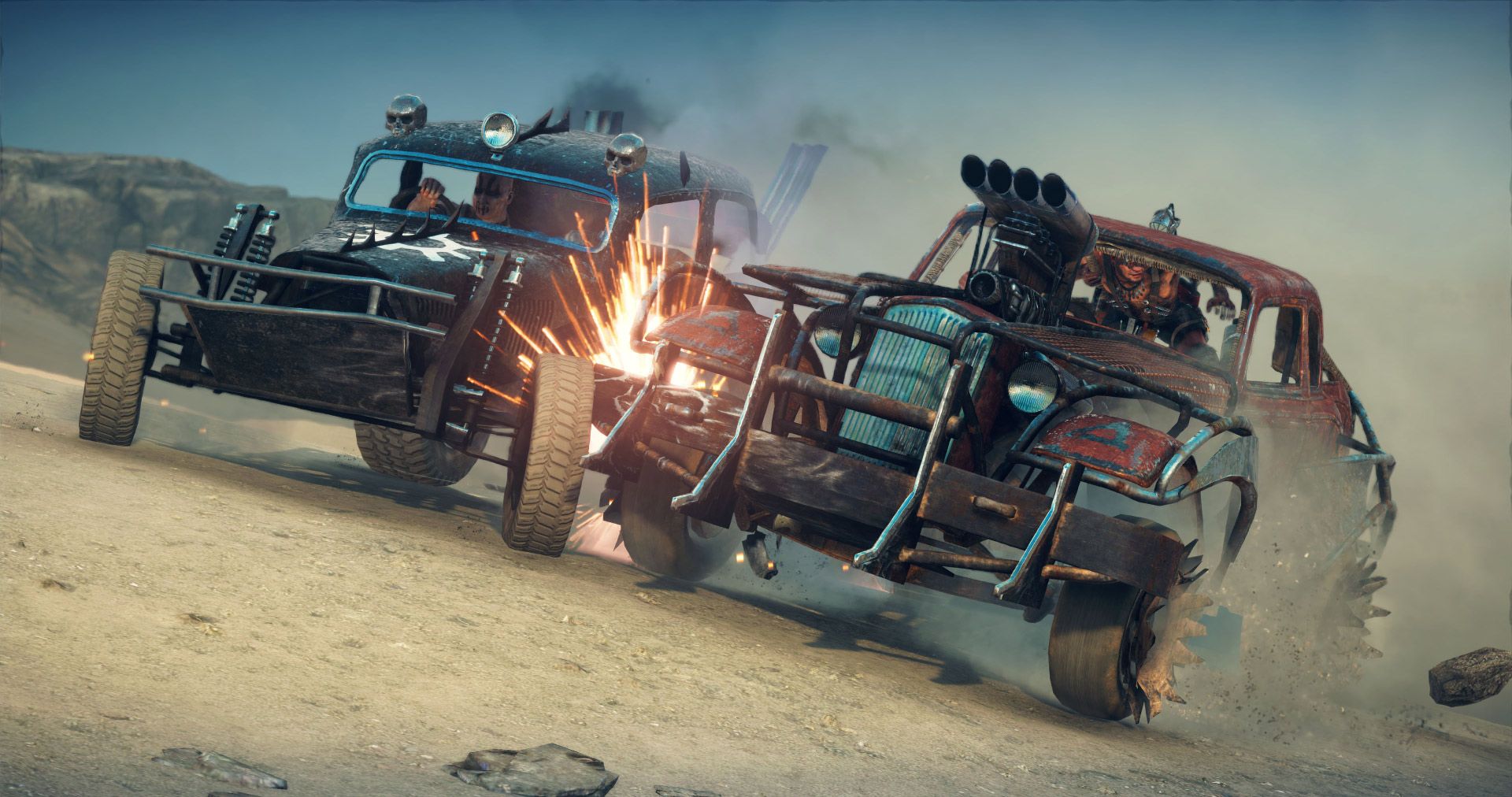
It’s the particle effects that impress most, though, as cars leave lingering trails of dust, and sudden sand storms that recall a similar scene in Fury Road rip through the wasteland hurling debris into your path, forcing you to seek shelter.
Granted, the environment may be expansive but it’s still a desolate desert no matter how you try to spin it, so, inevitably, the sights do become samey after a while. However, this doesn’t detract from the fact that Avalanche have crafted a captivating, beautifully-realised sandbox that immerses you into the bleak world of Mad Max.
As you explore, you’ll encounter plenty of unsettling remnants of life before the apocalypse: discovering deserted settlements that used to be occupied is chilling, as are the submerged planes and ships dotted around the map. One standout story mission sees you exploring the eerie ruins of an abandoned airport buried beneath the sand, navigating ravaged terminals before scaling up the ruins of a crashed passenger plane. It’s a shame the other story missions don’t match the imaginative level design seen here.
While the majority of people you encounter are hostile and attack you should you cross their path, occasionally you’ll discover genuine drink-deprived survivors wandering the wasteland. You can choose to be a good Samaritan and give them some of your water. Alternatively you can put them out of their misery by running them down since there are no consequences for your actions. I chose the latter which probably wasn’t the most moral thing to do, but the apocalypse is a harsh world.
There’s also a focus on Max’s primal need to survive in the wasteland and stock up on supplies. Survival elements are well implemented in context to the wasteland: you’ll need to scour for water sources, munch on maggots or consume canned dog food to replenish your health. Even your car’s fuel has to be topped up, so it pays to keep a spare can of fuel stored in the back car. You’ll rarely run out of fuel, but there were occasions where I was caught out. It all helps to convey a sense of isolation and depravity in the unforgiving world.

Mad Max’s weak point is its unengaging storyline. Max is a morose warrior haunted by his past that stays true to his cinematic character despite not sharing any likeness with Mel Gibson or Tom Hardy. Like in the films, he doesn’t trust anyone and does favours for leaders for his own benefit, but, aside from Chumbucket, the supporting characters you’ll meet lack any memorable charisma, providing you with generic fetch-quest objectives in exchange for new car parts. Your meetings with leaders ultimately feel meaningless, serving as a means to get to the final showdown.
It’s only towards the end that the plot picks up some pace and you become invested in the characters when Max gets to Gastown, meets love interest Hope and predictably exacts revenge on Scrotus, but the payoff is anticlimactic. Granted, Fury Road’s plot was thin to put it politely, but it didn’t matter because its use of world building to tell a tale of survival was smartly executed and the fast-paced action kept you on the edge of your seat. Fury Road also only had to entertain for two hours, compared to the Mad Max game which lasts 30 – 40 hours. That’s a lot of extra padding. Consequently, it’s easy to lose focus of your motivations in the narrative which is to simply build a car.
Mad Max also lacks any compelling female characters, which is a shame because this was one of Fury Road’s strongest assets that set it apart. Whereas Fury Road gave us the feisty Furiosa who arguably stole the show as a more memorable character than Max, the majority of women in the Mad Max game are depicted as scantily-clad slaves confined to cages. Even Hope, the game’s most fleshed-out female, is nothing more than a slave to Scortus and a clichéd damsel in distress love interest to Max. She’s essentially a plot device that leads to the predictable final showdown with Scrotus.
A Wasteland of opportunity
Like in Fury Road, the action scenes are so relentlessly intense that its slower moments puncture the pace significantly. Along with building the Magnum Opus and retrieving your stolen Interceptor, the overall objective is to lower the threat of Scrotus. It’s here that Mad Max falls into the same formulaic game design trap that plagues so many open world games, bombarding you with endless side quests to pad out the game.
Scrap acts as the game’s main form of currency which can be exchanged for new car parts or character upgrades, but collecting scrap is a painfully slow process – you have to painstakingly pick up pieces of scrap littered around the map in scavenging locations or leftover scrap metal from wrecks. Mercifully, you can hire clean-up crews that automatically salvage scrap for you to ease the tedium, but this also amounts to dull fetch quests as you have to find and collect the relevant project parts for friendly strongholds. It’s worth doing though as you can unlock additional perks such as automatic health and fuel top ups whenever you visit a stronghold, but building them becomes a chore – particularly as you have to hunt down the same project parts every time you unlock a new stronghold.
To make matters worse, story progression is heavily gated, often requiring you to achieve certain objectives, finish side quests and unlock character or vehicle upgrades before the next story mission can be unlocked. While this does give the game a sense of purpose in-between the story and helps prepare you for the more difficult missions by ensuring you’ve unlocked the right abilities, it’s frustrating for players who want to press on with the plot.
The key issue with the side activities however is the lack of variance. There’s a wealth of things to see and do (opening the massive map reveals an overwhelming scope of activities – it’s a completest’s worst nightmare) in Mad Max outside the story missions: infiltrating and destroying enemy camps, defeating bosses and tearing down scarecrows are all fun distractions at first, and you always feel like you’re progressing since many of the vehicle and character upgrades are locked by secondary objectives, but their rinse and repeat nature wears thin after a while.
Mad Max’s lack of original ideas proves to be its undoing – you get the feeling it would have stood out more if the market wasn’t already saturated with open world copycats. Indeed, it follows a tried and tested formula seen in a countless number of open world sandbox games and blatantly borrows from genre conventions: combine Fallout’s RPG progression, Far Cry’s camp takeovers, Just Cause’s appetite for destruction, Twisted Metal’s car combat and Arkham’s hand-to-hand combat, slap on a licensed property and you get Mad Max. But that would be doing the developers a disservice, because Mad Max deserves some praise for being a fantastically faithful adaptation of its source material.
A plodding pace means that Mad Max takes a while to get up to speed, but once it does you’ll be hard pressed to put the controller down at times as it’s easy to become absorbed into the well-crafted wasteland despite the repetition.
Avalanche have done a sterling job in capturing the spirit of Miller’s Mad Max universe and adapting it to a game much in the same way as Rocksteady’s Arkham series has for Batman – the fact I’m even comparing the two series is very high praise indeed. Mad Max could so easily have been a forgettable tie-in rushed for release in time for Fury Road, but Avalanche’s execution is exemplary. In that sense, Mad Max does the series justice and should satisfy fans.
It’s just a shame that, in-between the chaotic car combat, detailed open world and rewarding upgrade system, repetitive side quests, mediocre melee combat and an overall lack of originality let Mad Max down.
Our Review
Summary
Avalanche has done a sterling job capturing the spirit of Miller’s Mad Max universe and adapting it to a game just as Rocksteady’s Arkham series has for Batman – the fact these the two series are even being compared is very high praise indeed. Mad Max could so easily have been a forgettable tie-in rushed for release in time for Fury Road, but Avalanche’s execution is exemplary. In that sense, Mad Max does the series justice and should satisfy fans. It’s just a shame that, in-between the chaotic car combat, detailed open world and rewarding upgrade system, repetitive side quests, mediocre melee combat and an overall lack of originality mar the experience.


